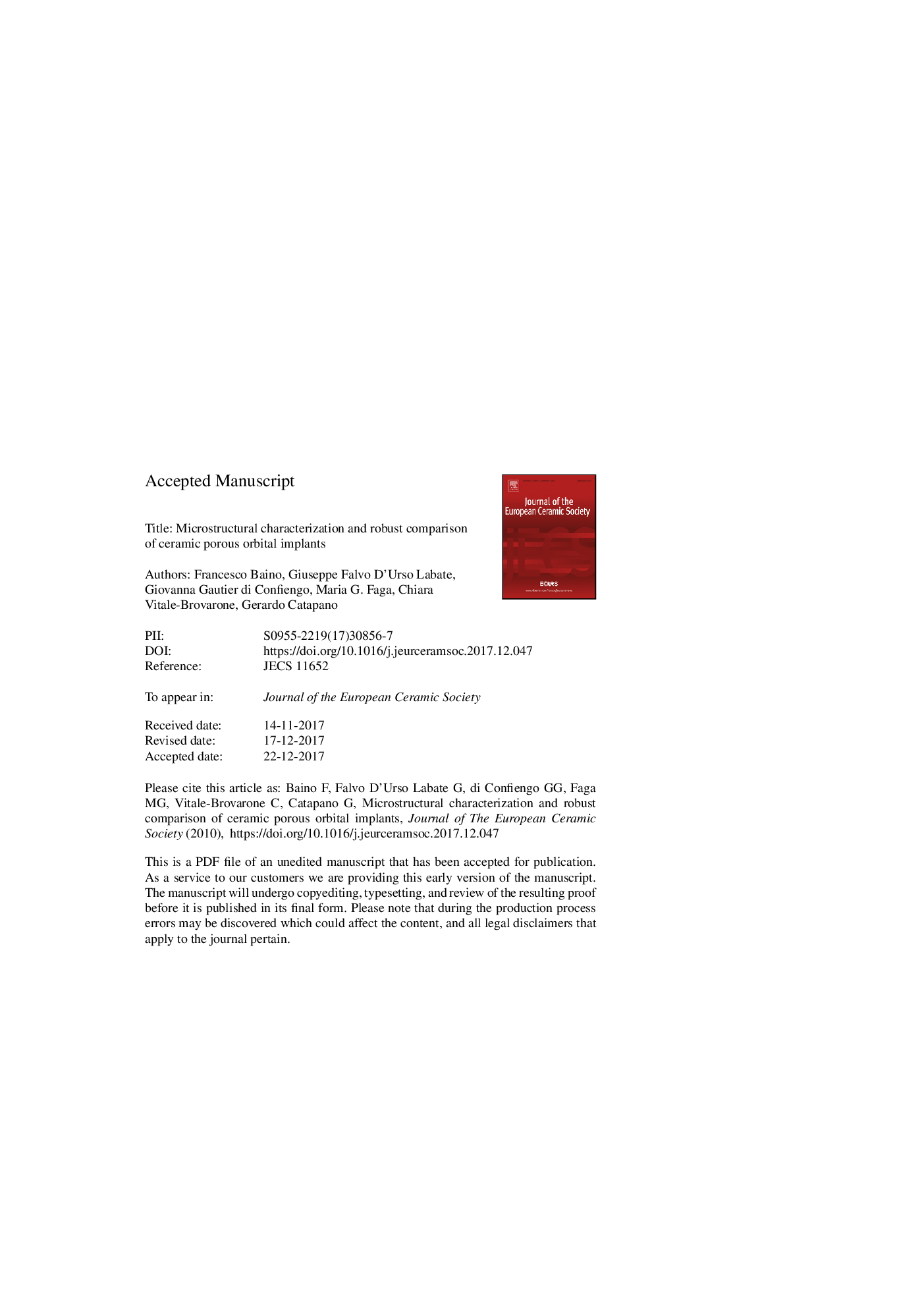| Article ID | Journal | Published Year | Pages | File Type |
|---|---|---|---|---|
| 7898227 | Journal of the European Ceramic Society | 2018 | 29 Pages |
Abstract
This research work tackles the challenge of developing an objective and reliable criterion to score porous bioceramic orbital implants with different microstructural characteristics. We produced porous glass-ceramics by the foam replica method and characterized their 3D micro-architecture through non-destructive X-ray micro-computed tomography. Six key features were estimated influencing their clinical performance, i.e. total porosity, pore interconnectivity, pore size distribution, surface-to-volume ratio, connectivity density and degree of anisotropy. Surface roughness was also characterized by profilometry. A multiparametric score accounting for all the estimated features was developed and used to evaluate the similarity between the produced porous bioceramics and commercial orbital implants. The clinical use of such a global score could make the selection of orbital implants less arbitrary and less dependent on the skills and personal experience of the ophthalmic surgeon. The approach presented in this study could be extended to other areas of ceramics science and technology.
Related Topics
Physical Sciences and Engineering
Materials Science
Ceramics and Composites
Authors
Francesco Baino, Giuseppe Falvo D'Urso Labate, Giovanna Gautier di Confiengo, Maria G. Faga, Chiara Vitale-Brovarone, Gerardo Catapano,
